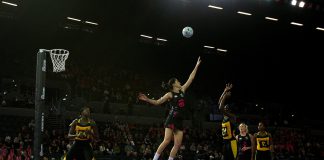Functional training has been around for a few years and has adopted many definitions, along with a few misconceptions of what it actually is or is intended to provide. So, let’s start with a basic understanding of what it is by definition.
Functional training is defined as exercises that closely mimic that of a movement pattern or activity you wish to improve. According to sports coach Boyle (2016), a functional training programme should prepare an athlete to play their sport with a strong focus on training movements, not muscles.
Now, muscles are responsible for creating all our bodily movements so it’s not to say we aren’t using our muscles. What it means is to do exercises that involve using multiple joints and muscles at the same time such as when we play sports or do common daily tasks rather than just focusing on one muscle area, such as only training your biceps. In other words, do exercises that work many muscles integrated together. An example would be to do pull-ups which involve your back, shoulders, and arm muscles, instead of only your biceps in a dumbbell curl.
Therefore, we can say the characteristics of functional training include:
- Focus on movements, not individualised muscles
- Commonly whole body movements
- Requires dynamic stability, balance, and proprioception
- Movements in multiple planes of motion
Here are some benefits to performing functional-based exercises:
- Improves your balance and coordination
- Strengthens your dynamic stability
- Supports activities of daily life and sports
- Become more efficient at fast moving activities and with weight bearing movements
- Compliments strength movements when supplementing with traditional strength training
As you can see the fitness benefits are numerous. In addition, functional training compliments traditional strength training as well. This is because functional training is ideal for strengthening movement patterns, since it has transferability to the movements required in sports and daily life activities. But, I must point out that functional training isn’t intended nor recommended to replace traditional strength training.
Coming late January 2019, the AUT Millennium Gym will have a new functional training area where we can offer members exercises that fit the model of functional training. This area will have a multi-exercise rig where members can do pull-ups, dips, squats, landmine rows, and a host of other functional exercise movements. We will have also have ample space for dynamic exercises such as medicine ball and kettlebell tosses and swinging, sled pulls/pushes, crawls, hurdles, and more.
If you have any further questions about functional training please contact me or inquire with any of our staff trainers or personal trainers in the Gym.




































